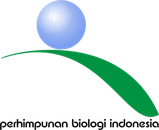Species and Morphological Identification of Wild Macrofungi in Nueva Ecija, Philippines
DOI:
https://doi.org/10.15294/biosaintifika.v17i1.10882Keywords:
collection, mushroom, Nueva EcijaAbstract
This study was conducted to list the different species of naturally occurring macrofungi in selected municipalities in Nueva Ecija, Philippines. The collected species were morphologically identified and recorded in terms of physical distribution, collection site, collection month, and climatic conditions. Opportunistic sampling was used to collect the wild mushrooms from May to July 2023 in four collection sites (San Isidro, Jaen, San Antonio, and San Leonardo). There are 53 collected fruiting bodies belonging to 2 phyla, 4 classes, 5 orders, 14 families, 21 genera, and 35 species taxa. Out of 35 species, 25 wild mushrooms were identified at their species level while 10 were identified at their genus level only. Two collected mushrooms belong to Pezizomycetes (5.71%) while the rest belong to Agaricomycetes (94.29%). The collected wild macrofungi grew solitary or gregarious in different substrates such as soil, trees, decaying logs or trunks of trees, and animal dung. Twenty-three (23) of the collected mushrooms were found to be edible, while 12 were poisonous. Site A (San Isidro) was recorded to have the highest percentage composition of macrofungi. The distribution of the macrofungi in the collection sites was found to be affected mainly by physical factors.


